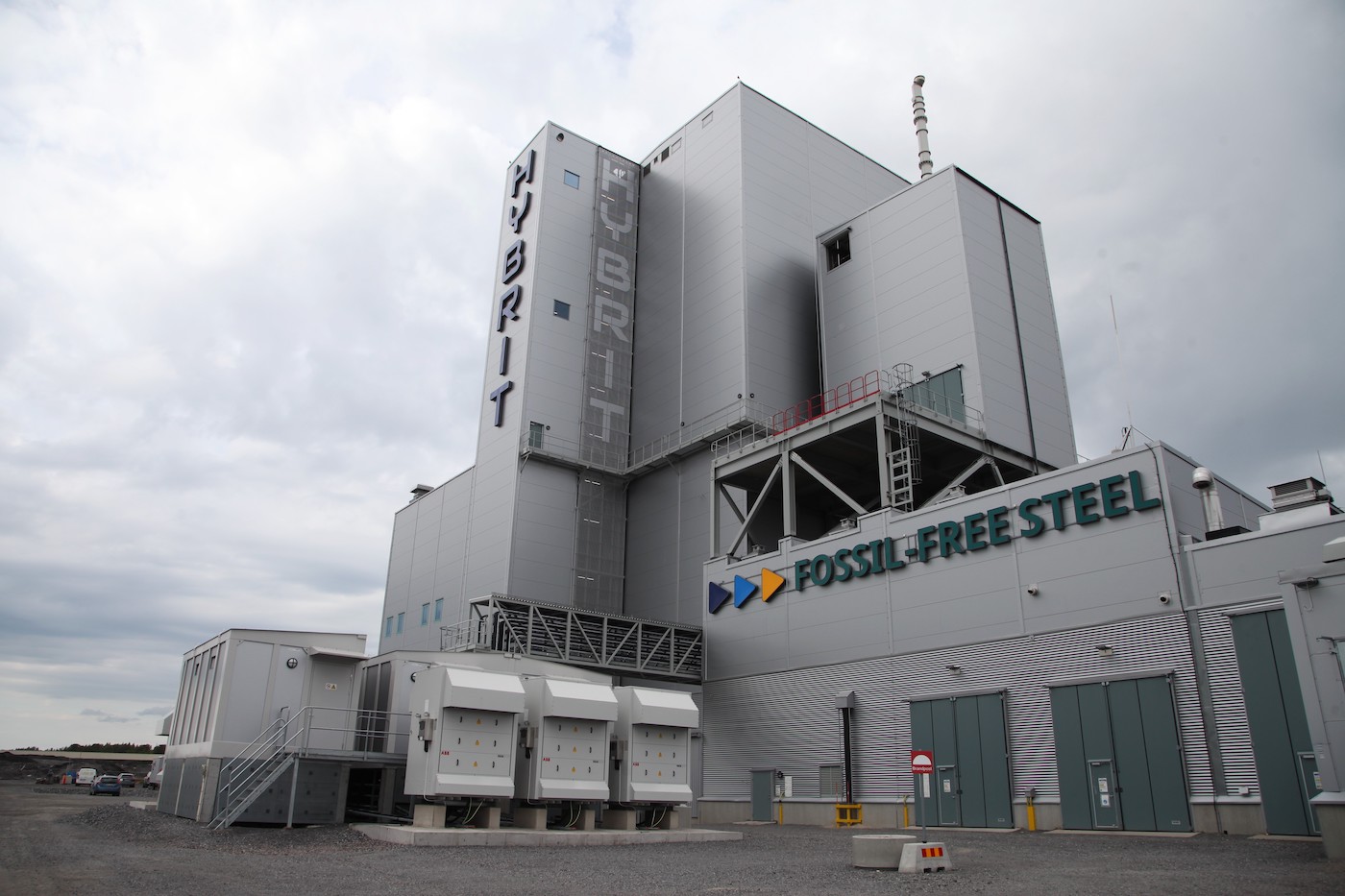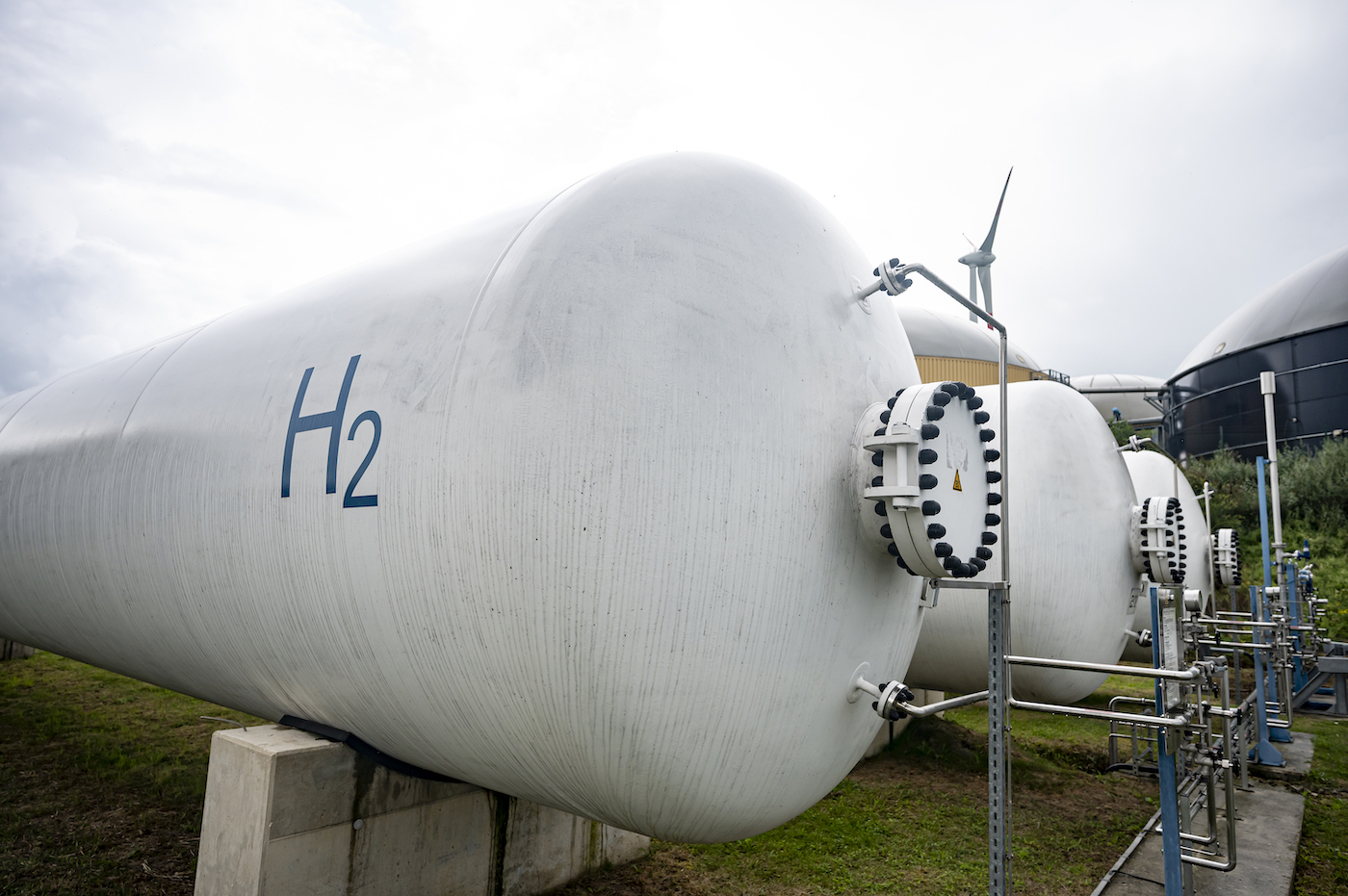If you're concerned about the environment, you're aware that planting trees is one of the most effective things you can do. Trees absorb carbon dioxide and provide oxygen, which helps to preserve the environment. If a tree has to be removed, then be sure it's a last resort. https://www.linkedin.com/in/TreeRemovalPensacola/ provides stump grinding, tree trimming, and stump removal.
The United States stands at a pivotal point on the path to addressing climate change. The Inflation Reduction Act will over the next decade unleash hundreds of billions of dollars in subsidies designed to make clean technologies so cheap they will be rapidly deployed, helping the nation cut emissions some 40 percent by 2030.
If those subsidies work as intended, that is.
In the case of a new tax credit for clean hydrogen, a lot rides on that “if.” It could accelerate a critical climate solution that could drive down greenhouse gas emissions in many sectors of the economy. Or it could underwrite a process that actually increases emissions. The outcome depends largely on accounting rules that the Treasury Department has yet to write.
“Getting this right is critical to making this credit work,” Nathan Iyer, a senior policy associate at the clean energy research nonprofit RMI, told Grist.
Decarbonization experts say clean hydrogen is an important tool for addressing climate change because it could more or less replace fossil fuels in many applications and doesn’t release CO2 when burned. Some see it fueling trucks, cargo ships, and even airplanes. Others consider it a promising replacement for coal in producing steel. It also holds potential as a means of storing wind and solar energy to be drawn upon when those resources aren’t available. At the very least, it could replace the dirty hydrogen we use today, largely to make fertilizer.
Although hydrogen is the most abundant element in the universe, you can’t just dig it up like fossil fuels. Instead, it has to be pulled off of other compounds, like methane (CH4) or water (H2O). Almost all of the hydrogen used today is derived from methane, or natural gas, in a process that releases carbon dioxide. But it’s possible — albeit more expensive — to make hydrogen with zero emissions through electrolysis. All it takes is electricity, water, and a device called an electrolyzer, which splits H2O into hydrogen and oxygen. Use renewable energy and the process is emissions-free — creating a product often referred to as “green hydrogen.” Only a handful of plants around the world use electrolysis, which contributed about 0.04 percent of the global supply of hydrogen in 2021.
There are other options for lowering hydrogen emissions, including installing carbon capture equipment on conventional hydrogen plants. The new tax credit is designed to make various cleaner production techniques more competitive with conventional methods. But it offers the largest return — $3 per kilogram of hydrogen — for a near-zero emissions process, giving a boost to green hydrogen in particular. There is no cap on the benefit a producer can earn, and the total payout across the industry could be tens of billions of dollars over the next decade.
In theory, splitting water molecules with renewable energy is an elegant solution, but that description glosses over a key problem: Many producers plan to draw power from the electric grid in addition to, or instead of, a wind or solar farm. Given that much of the nation’s grid power comes from fossil fuels, the energy-intensive nature of electrolysis could end up generating more emissions than conventional natural gas-based hydrogen.
“The electricity has to be extremely clean for the emissions to actually be low and even remotely environmentally friendly,” said Wilson Ricks, a mechanical and aerospace engineer earning his doctorate in Princeton University’s ZERO Lab. Ricks recently published a working paper that identified ways to credibly lower the climate impacts of grid-connected hydrogen.
Now it will be up to the U.S. Treasury Department to ensure that the tax credit doesn’t reward hydrogen producers for a process that could move us farther away from our climate goals than we are today.

Steffen Trumpf/picture alliance via Getty Images
Before the Inflation Reduction Act passed in August, most green hydrogen projects being proposed in the U.S. were set up the same way, said Matthew Bravante, a hydrogen analyst at clean energy research firm BloombergNEF. “They were all grid-connected,” he said.
There are a few reasons for this. Electrolyzers are expensive, and it makes the most financial sense to run them 24/7 to maximize productivity. That’s not possible with wind or solar alone. What’s more, Bravante said, the companies making these complex machines don’t know if cycling them on and off as clouds pass or breezes stop degrades the equipment. As a result, manufacturers are hesitant to warranty them for such use, undermining project developers’ ability to raise capital.
There are other considerations. Any producer piping hydrogen to a buyer requiring a constant supply must use the grid to ensure a steady output or build storage tanks to compensate for intermittent production. And some simply do not have enough land to build wind or solar farms.
Grid-powered electrolyzers might make business sense, but they are harder to square as a climate solution. Some 60 percent of U.S. electricity is currently generated by burning fossil fuels. If you used the average grid electricity to produce hydrogen today, the process would release about twice the emissions of conventional hydrogen production.
Before the tax credit was created, green hydrogen producers had a plan to get around this problem: “They were either going to use renewable energy credits or virtual power purchase agreements to convince an investor they were green,” Bravante said.
These are both market-based mechanisms that many companies use today to “procure” clean energy when they connect to the dirty grid, but researchers have found that they aren’t fit for purpose.
Renewable energy credits are tradable certificates, each representing one megawatt-hour of electricity that has been generated somewhere, at some point, by a wind or solar farm. Research has repeatedly shown that the purchase of such credits fails a critical test — it doesn’t help bring new clean resources onto the grid, so it doesn’t actually reduce emissions.
Virtual power purchase agreements are essentially a more sophisticated way for a company to buy clean energy certificates, by entering into a long-term contract directly with a renewable energy provider. These contracts typically do help finance new wind and solar projects, but they have another problem. Most renewable energy sources don’t generate power 24/7. If a hydrogen plant signs an agreement with a new, local solar farm but continues operating after dark, a nearby natural gas or coal plant will probably ramp up to meet that demand.
This will remain an issue even as the grid becomes cleaner, said Ricks, the Princeton doctoral student. In his working paper, he used an economic model to look at the emissions impacts of grid-connected hydrogen in the western United States in 2030, including in Southern California, which is expected to have an 80 percent clean grid by that date. Under that scenario, even if hydrogen plants purchase enough solar power to cover their cumulative energy needs, their nighttime demand will still be met by coal- and gas-fired plants. That could prop up dirty power plants that would otherwise be slated for closure. “Just running those more may well be the cheapest option for supplying 24/7 demand for electricity,” Ricks said.
Emissions could surge as a result. Ricks estimates that these “consequential emissions” for a Southern California hydrogen plant would amount to about 20 kilograms of carbon dioxide per kilogram of hydrogen produced. That’s five times higher than even the lowest threshold that the Inflation Reduction Act sets for earning the tax credit. Emissions could be double that amount in coal-heavy parts of the country like Wyoming. But producers could reap the full $3 clean hydrogen subsidy if the government doesn’t take these emissions into account.

Natalie Behring/Getty Images
These issues are at the center of an ongoing debate in Europe about how to define green hydrogen, a conversation now starting in the U.S. Within the next year, the Treasury and Energy Departments will develop guidance outlining whether companies can use market-based mechanisms to demonstrate eligibility for the tax credit and other subsidies, and if so, under what conditions. Iyer said the agencies must strike a balance between keeping emissions in check and supporting an emerging industry.
The guidance “has to be strict enough to actually reduce emissions, flexible enough to put electrolyzers on the grid and actually build out these projects, and it has to be simple enough that the IRS can do it,” he said.
The government could easily achieve two out of three, making the rules so strict that only projects that rely exclusively on dedicated renewables qualify. Bravante said that would likely stunt the industry’s growth but the tax credit is generous enough that some projects will still get built.
At least one company, Hy Stor, is already going this route with a hydrogen plant it’s building in Mississippi. Hy Stor has acquired 70,000 acres of land — some of it across the border in Louisiana — for the facility and the solar and wind farms needed to power it. The plant will also utilize underground caverns to store the hydrogen so that it can provide a steady stream to customers. “We’re not trying to put an asterisk or small print,” says company CEO Laura Luce. “We’re really trying to focus on a clean standard where someone knows exactly what they’re getting.”

Rather than forcing all green hydrogen producers to emulate Hy Stor, Ricks argues that the Treasury should allow grid-connected projects — under three conditions: Any renewable energy credits or purchase agreements they use to claim lower emissions should be associated with new clean energy resources, in the same region as the hydrogen plant, and match the plant’s electricity consumption on an hourly, instead of annual, basis. This strategy is also known as 24/7 carbon-free energy.
Adhering to these three requirements might mean that a hydrogen plant buying solar power through a purchase agreement would have to limit its operations to daylight hours, or earn the tax credit for production only during those hours. But it could also encourage hydrogen producers to buy power from renewables like geothermal plants that generate electricity when a solar farm cannot. Such technologies are needed to create a truly clean electricity grid, but they are harder to finance than wind and solar. Rules governing the hydrogen tax credit could give them a much-needed boost.
“This hydrogen load could be a real subsidy for geothermal, for long-duration storage, for all the things we need,” said Iyer. “And if we do it badly, it could just keep a natural gas plant alive. And then this accounting fiction is used to not only keep the natural gas plant alive, but also provide a massive credit to do so.”
Ricks’ modeling showed that if hydrogen producers follow these three conditions, their grid-connected hydrogen will be no worse for the climate than hooking up directly to renewables. Enforcing these principles would certainly raise development costs, but Ricks said that the $3-per-kilogram maximum tax credit would still make projects feasible — especially as electrolyzer prices come down.
Ricks’ solution isn’t perfect. His study also found that the tax credit creates a perverse incentive: It’s so lucrative that it could enable hydrogen companies to outcompete other buyers of renewable energy. In some parts of the country it could end up supporting clean hydrogen production at the expense of cleaning up the electricity that ordinary people use. In Wyoming, for example, hydrogen producers could buy up all the cheap wind that would otherwise replace gas and coal on the grid.
To Ricks, this tradeoff might be worth it to help the hydrogen industry scale up and bring costs down over the next several years. And he’s confident that asking companies to meet the three conditions is the best way to minimize the risks. “It’s not going to completely solve the problem of us prioritizing hydrogen over electricity decarbonization, which is effectively what a subsidy of this scale is doing, but it will make that hydrogen production as clean as we can effectively make it.”
This story was originally published by Grist with the headline How a new subsidy for ‘green hydrogen’ could set off a carbon bomb on Dec 12, 2022.

No comments:
Post a Comment